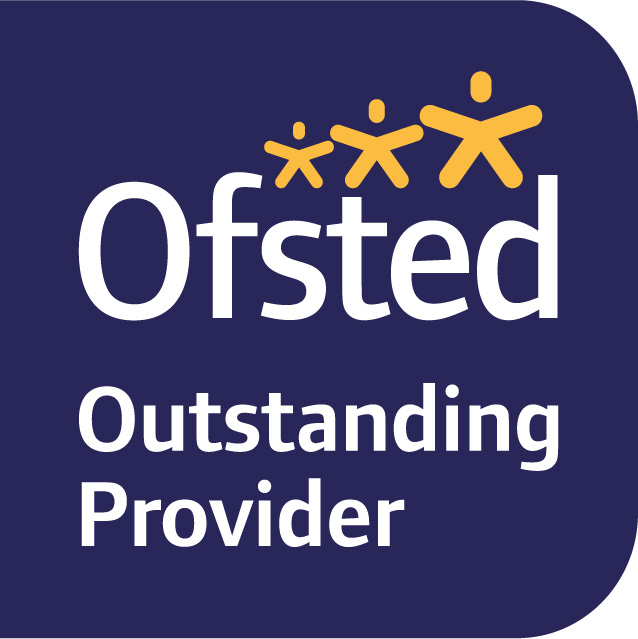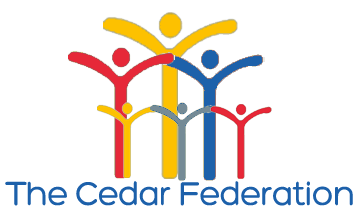Please find below home learning resources:
Maple Class- home Learning 1.2.21
|
Monday |
Tuesday |
Wednesday |
Thursday |
Friday |
|
English |
English |
Music |
History/Geography
|
|
|
Pe |
Maths |
Maths
|
Dance
|
Art |
|
PHSE/RE |
PE enrichment |
Life skills |
DT |
Food tech/DT |
Choose the work that is appropriate for the ability of your child.
Take photos of your home learning please
Any sheets you complete- make sure you write the date on them and put your name on the back and bring them into school to show us your amazing work 😊
|
Monday |
|
Phonics
Phase 1: Walk around the house and the garden looking for things that begin with the sound iii- can you collect them and either take a photo or draw and write a list of them. Resources: to support- visuals of i objects
Phase 2: Look at the new sounds l 1 letter that makes one sound Model this with the word let Have a selection of words with a l at the start practice reading them. l-e-t let lot lick lap lad late led Resource- l words
Phase 3: During Phase 3, the following tricky words (which can't yet be decoded) are introduced: practicing reading them and practice them throughout the week with your adult. Can you think of some sentences and try and write them using the tricky words below.
Resource- tricky words from last week
Literacy- speaking and listening
LO: To be able to say a sentence out loud clearly. Watch the animation for inspiration SOUNDTRACK | The Mixed-Up Chameleon | Cartoons For Kids - YouTube Discuss what you have written so far and try to read it loud to an adult. Now thinking about emotions and feelings. Try to talk to an adult about how the chameleon ( you) felt at the start in the middle and at the end. Remember what you have said today so you can write it tomorrow in your diary.
PE – continue with this working through the greatest hits We have been really enjoying singing and dancing along to this in class. Sing and dance along with ‘The singing walrus greatest hits’ https://www.youtube.com/watch?v=fQN46xvrz7Y&vl=en
PSHE LO: To be able to recognise the emotion of jealousy Starter In our PSHE lessons we have been focusing on our feelings, using the zones of regulation. We have looked at using the zones of regulation colours to help us to identify how we are feeling and strategies that we can use to help us.
Today we are going to look at the jealousy which can be found in the yellow or sometimes red zone. Let’s read through the ‘Feeling Jealous’ power point [twinkl] we can talk about the things we can do to help us calm and return to the green zone.
Activity Draw a scene in the photo frame of a time when you felt jealous or can you draw a green eyed monster.
Challenge Make a list of things you can do to help you overcome jealousy (see When you feel jealous you could…sheet) Resources: Feeling jealous powerpoint- Jealousy frame/ template
RE LO: To learn about inspirational people
Rabbi Lord Jonathan Sacks follows the Jewish faith. He believes that we should talk to people who follow other faiths and respect their faiths. We can learn more about Rabbi Sacks from this Powerpoint [Twinkl]
Activity Complete ‘Respecting religious difference’ worksheet.
Challenge Complete a biography writing frame about Rabbi Sacks.
Key Questions Why is it important to speak to other people of different religions? How many different religions can you list?
Resources: Respecting religious difference’ worksheet, Rabbi Sacks from this Powerpoint [Twinkl] |
|
Tuesday |
|
Phonics Phase 1: Walk around the house and the garden looking for things that begin with the sound nnn with your adult- can you collect them and either take a photo or draw them and write a list of them with support. Resources: to support- visuals of n objects
Phase 2: Looking at the sound ll Look at ll words and discuss with your child. lull ball stall cull skull Practice reading the words with your adult then try to copywrite these using your sounds to help. You could cut them up and try and match the picture to the right words. Resource – ll words and pictures
Phase 3: You have been reading and writing them now pick a couple of books from home and try and spot these words in your books.
he she we me be was you they all are my her Resource -tricky words
Literacy LO: To be able to continue to write a diary entry.
Last week we looked at the story of ‘The Mixed-Up Chameleon’. Can you remember what happened in the story? What it a fiction or non-fiction text? What were the main events of the story? Who were the main characters?
We are going to continue to write a diary entry from the perspective of the Chameleon. Re-watch the power point about writing a diary if you need to. Focus this week on feelings and writing about them in a diary format.
Re look at Dear Diary example. Do you remember the important things to remember when writing a diary entry? Do we write in the first or third person? Past or present tense?
Activity 1. Continue to write the Diary (using capitals) focusing on feelings and why you feel this way (The chameleon)
Challenge Continue to use pictures from the story to write sentences in the form of a diary about the Chameleons day at the zoo.
Extra Challenge: If you were the Polar Bear what were you feeling and thinking?
Resources: re cap last weeks power point about a diary, Dear Diary example, Diary template, pictures
Maths-weight
LO: To explore the vocabulary of weight
Starter To explore the vocabulary of weight watch a video Watch below https://www.bbc.co.uk/bitesize/clips/z48q6sg and https://www.bbc.co.uk/bitesize/clips/z7w7tfr
Activity Have CiP symbols available which say heavy, heavier, heaviest / light, lighter, lightest etc and explore there meaning.
Experiment with a range of scales, balance, kitchen, bathroom etc. What happens when a shoe is put in Handle objects of different weights. Watch the reaction of the children when the objects are weighed. Discuss what happens to the scales with light things and heavy things.
Talk about what happens with the scales. Why is that pan moving down? Etc. Adults introducing weight vocabulary supported by signs.
Challenge Can you order the objects by weight? What one is the lightest? What one is the heaviest? Extra challenge Can they write and draw these?
Key Questions Why do we weigh objects? What would happen if we tried to lift something heavy? Show me something heavy.
PE Enrichment
Watch and join in an exercise video on You Tube · Joe Wickes - https://www.youtube.com/watch?v=mhHY8mOQ5eo
· Cosmic Yoga - https://www.youtube.com/watch?v=GM616bRA_uw
· Go for a walk and see how many different trees you can spot.
|
|
Wednesday |
|
Music See separate music lesson
Maths - weight continued LO: To explore non-standard weight
Starter Yesterday we started looking at weight and using the correct words. Today we are going to explore non-standard weight. We are going to use cubes/ counters/ pasta to weigh objects around the home.
Activity How many cubes? Nonstandard weight activity sheet [Twink] Heavy or light? Non standard weight activity sheet [Twinkl]
Resources- weight activity sheets.
Challenge Can you find heavy and light objects around the house ?
Key Questions What are scales? How do we use them? Have you seen weights written on packets? Have a look in your lunch box!
Life skills LO: To learn about using money Starter When we want something we can’t just go to the shops and pick it up; we need to use money to buy them. Different items cost different amounts of money. Some items are very expensive and we have to save up money to buy them. Remember when you saved up your birthday money to buy something?
Let’s practise buying things using Counting Pennies (1ps)
Activity 1: Use a laptop to practise buying toys: https://www.topmarks.co.uk/maths-games/5-7-years/money
Activity 2: Think about buying something pretend with your pocket money. Discuss with your adult how many weeks or months would it take to save up? Challenge Role play a bank – filling in forms and paying in money. Requesting money. Paying bills. Borrowing money – loan (interest payments).
Resource :Twinkl worksheets – check your change
|
|
Thursday |
|
Art/DT To make a chameleon with a moving tongue – caution with blowing through straw!! Could be changed to pushing a pipe cleaner out??
https://www.youtube.com/watch?v=leUhJFXTPbk
Dance LO: To be able to put three travelling dance moves together. Remember the dance you have been working on and try to put three travelling dance moves together on the ground, midway (all fours) and standing upright. Film it or photograph it if you can.
|
|
Friday |
|
Phonics Interactive games on the Letters and Sounds website Phase 1,2,3 Choose a favourite game linked to your phase- Can you write some sentences with help using your phonics all about reptiles?
Science LO: To begin to look at food chains. Starter This term we are looking at animals, reptiles in particular. We have learnt that animals need food and water to live. Today we are going to look at the types of food that animals eat. Sometimes there is a link between sources of food – this is called a food chain. Let’s learn further by reading the KS1 ‘What is a food chain?’ Power point
Activity 1. Complete the food chain sorting pictures game 2.Try and remember what different animals eat. Make a mind map with an adult of the different types of food that reptiles eat and drink.
Challenge Draw a food chain including reptiles
Key Questions What is a food chain? Do reptiles eat? What food do you eat?
Resources- ‘What is a food chain?’ Power point [Twinkl] food chain sorting pictures Art LO: To design a Valentines Day card
Activity There is a competition with a prize for each class for the best Valentine’s Day card. Let’s think about the different cards and designs we may have seen. Brainstorm different things we could put on our card, the shape of the card, 2D/3D. How could we make it 3D? Look on the internet for ideas.
Write inside the card and design and make the front of the card.
Challenge Can you make an envelope? Look up the history of valentine cards.
Key Questions Why do we send cards on Valentine’s Day? Who do we send valentine’s cards too?
DT – continue with Art/DT project LO: To make a 3D model of a reptile (ongoing project) Continue to make you model- think about what colours to paint it and make texture on it.
Activity- continue Write and draw a step by step guide for how to make a 3 d model.
Explore the different types of modelling materials eg: clay, playdough, paper, Modroc, wire, paper straws etc Can you make a model from a different material?
Food tech Help an adult make a tasty, healthy meal for the whole family. |












